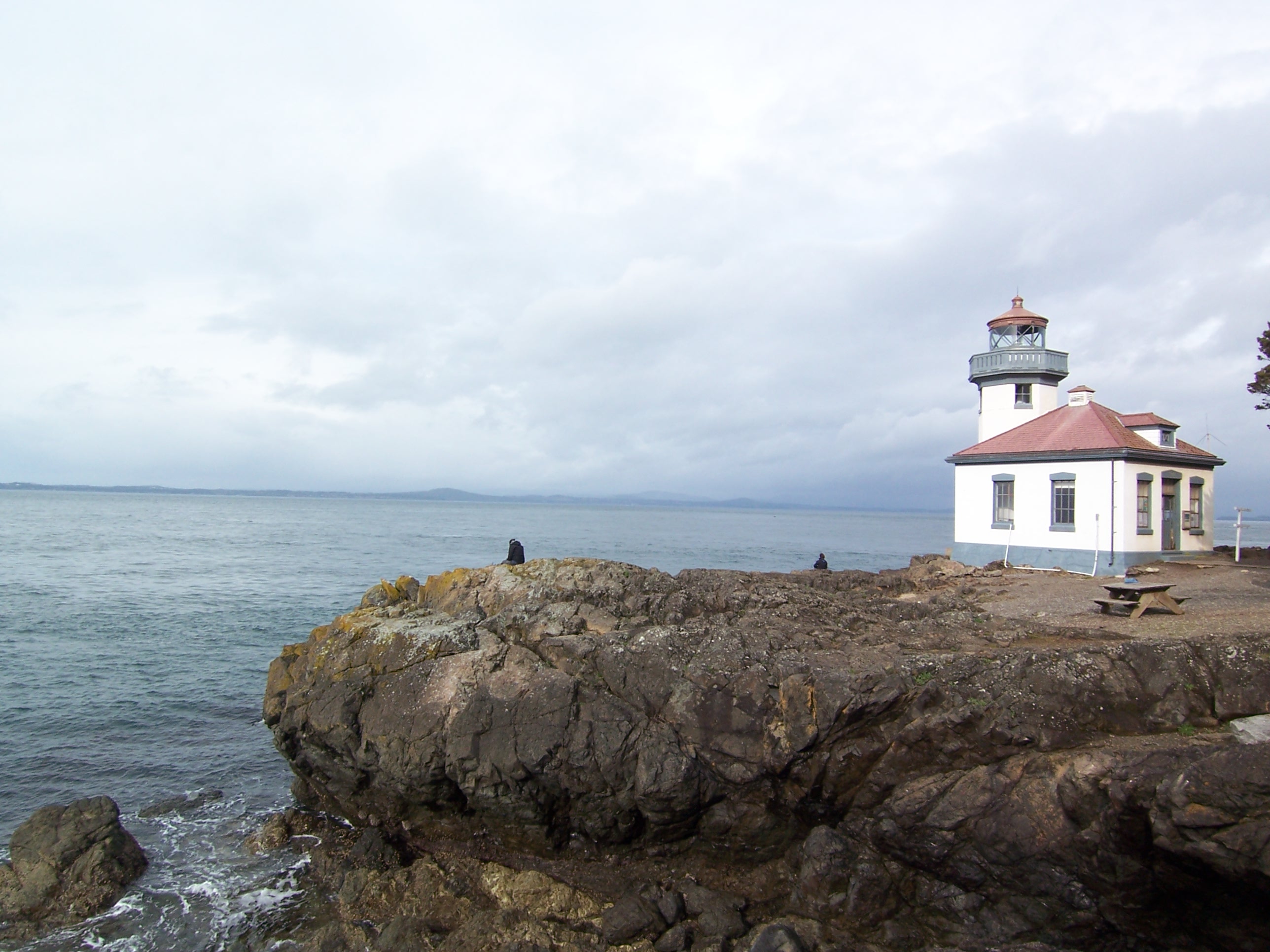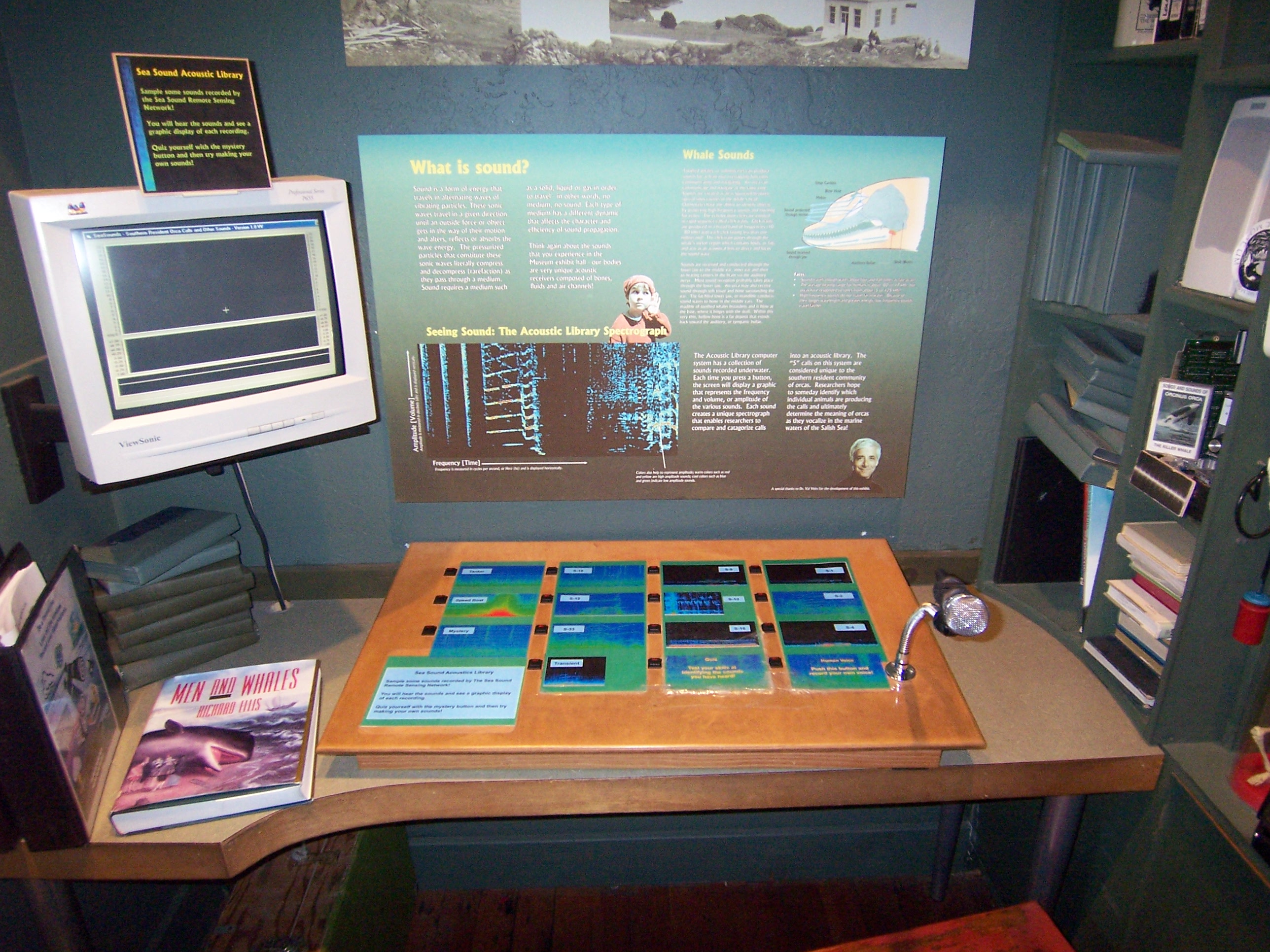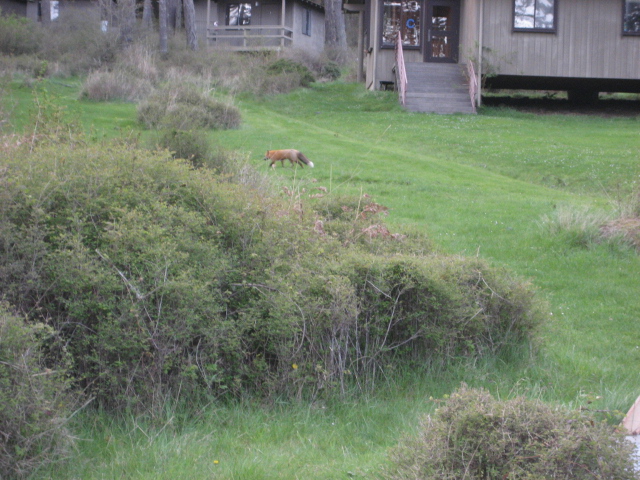A week has gone by since I first set foot on the San Juan Islands. Coming from San Francisco, my body has not fully assimilated to the colder temperatures here up in the northwest. Arriving via the ferry from Anacortes, this is my first time on the San Juan Islands. My very first impression of the Friday Harbor Labs was a good one. There was this sense of a small family community here, much like my old high school back two years ago.  It is very different from being in a large lecture hall filled with nothing but hundreds of students. This year in Beam Reach’s spring 2010 program, including myself, there are only four students. I feel this is a great opportunity for us to get to know all the instructors one-on-one, enabling a much more in depth relationship towards each other. Personally, I think a small teaching environment is very rigorous and demanding, but yet again, the experience grants one more friends, support, and encouragement to do better.
On the first week, we were able to learn a lot of the basics of acoustics and how sound works. I learned a lot of new things that I have never been taught before, and things were revisited that I should have remembered back long ago. Being the youngest one of the Beam Reach group and a second year undergraduate at UC Davis, I have never had much experience in dealing with loads of reading on a “close to graduate level†expectation level. The first week dealt with plenty of article reading that we discussed later on during the days in class. The discussions went well, delving into topics about the southern resident killer whales’ endangerment status, to the influences of boat noises underwater. Our instructors, Dr. Jason Wood, Dr. Val Veirs, and Dr. Scott Veirs, provided us with a general background to the southern resident killer whales’ world in the northwest. Acoustics, involving graphs, physics, and noise, really blew my mind. Even though it might take a while for me to personally adjust to this hard-working environment, I will try my best to keep up with the pace. Moreover, I would love to take the lead sometimes in the group and help others out as I anticipate the amount of help I shall receive.
We visited the Lime Kiln Lighthouse on the second day of the week, where we formulated our five initial questions to help narrow our thoughts to a potential research question that we will be answering over the course of these ten weeks.  From the photo, the lighthouse can be seen with my two fellow classmates in the background, Kathryn and Nora. When the weather permitted, we strolled by the docks.

But the most interesting place that we went to was indeed the Whale Museum in town. Walking there took about half an hour, but that time was worth it. Although small, I felt that this museum really emphasized that sense of specification with the southern killer whales and other marine species in this particular northwest area. The exhibits really portrayed what are affecting the species and how we can protect them. One exhibit that really stuck out to me though, was the acoustic exhibit, created by Dr. Val Veirs himself. I thought that this exhibit can give the public a general idea of the effects of fluctuating noise levels in the ocean that can cause an irritation to the killer whales. I had so much fun twiddling around with the different sounds and buttons on the dashboard, quizzing myself to the various calls of the southern resident killer whales out there.

Weather was decent the first week, with much sun, with a gale on Friday and Saturday. :]
Read More
Greetings,
Today we walked through names of machines that look fragile and are minimally $1,000 a piece. Apparently if the word “acoustic†is used in the device name, you can assume at least a grand was put into it. Needless to say, I was not sticking my fingers on each button or playing around like I usually would, but I feel like my time will come. Cross your fingers for me that I don’t accidentally knock a particular orange or blue box into the Salish sea somewhere along our journey. I think one of the forms that we signed said that they replace those boxes with our first born child. So….none of that.
I am starting to wish that I still had my notes (or that fancy Iphone application) to help identify the birds in the area. I am familiar with Midwest ornithology, but have to admit that I would love to know the names of the annoying screeching birds in the tree just above the back deck. I also should know the names of several beautiful singers outside my window in the morning. It is now that I wish I could pull my ornithology professor out of my pocket and have an opportunity to expand on what I know. Luckily, the professors keep bringing books for our own personal Beam Reach library to the duplex and I think there is a bird identification guide there. We did discover that the loud ringing noise every early morning is a Northern Red Shafted Flicker marking it’s territory. Here’s all about it: http://www.allaboutbirds.org/guide/Northern_Flicker/sounds
One of the coolest things I was able to see today was not an ocean organism at all, but a charming red fox crossing my path on the way to the dining hall. I was able to snap a few pictures, and although it looks like the animal was far away, I assure you that it was a close and personal encounter. I wonder if this is the only one in the area? What does it feed on? Has anyone done a population survey of the red foxes on the island? I also will expand my wondering to how they got here in the first place? I don’t seem to know enough about the natural history of San Juan Island to know when the last glacial period has been. However, I can easily inform you that the worm population in Northern Wisconsin is mostly invasive and were brought to the land from England accidentally as soil supplements in plants or have been released by recreational fishers.

Anyways, my class spent another portion of the day exploring research topics from past Beam Reach students. When I was first thinking about joining the program I read through the titles and abstracts of most of past student papers, but it was refreshing to start thinking about how to connect those projects to my peak interests. As a biologist, it is clear that regardless of the sweat and tears put into the research topic, there will be a statistical challenge at the end of the program when you find the challenges of making anything statistically significant given the sample size. Anyone the publishes findings and are respected for their research have done experiments over and over again to find true conclusions. With this in mind, I will attempt to connect my research to a dataset from one of a past student. I am interested in the human impacts (aka boat noise) on the behavior of the Southern Residents. There has been increased attention on regulation in the area since NOAA is debating making a significant portion of the West side of the island a Marine Protected Area. Basically, this would mean that any vessel (including canoes and kayaks) cannot enter the water in the MPA. I am not sure if this is according to a particular season, but I believe that it would be in effect year round. I am excited to take part in the process from this point forward. I have been in tune with the changes in regulation and will work on gaining experience on how an MPA is created and what that means for all parties involved. I think that this is the right time to ask around and make observations of various opinions on the proposed changes. This is where the Anthropologist in my wants to run free.
The other thing that peaked my interest today was expanding my ideas about hydropower. I am usually in full support of alternative energy technology and was a bit surprised that I hadn’t thought about the details of how the ecosystem might be impacted. It seems like no one really has an answer to this question, even though there is a tidal generator newly installed in Puget Sound. I can only imagine the impacts that filtering water into a spinning system would have on all of the micro-organisms floating in that same water. Maybe it won’t impact the quality of life at all…..I just wonder what is being done to verify that. Jason also said that in Britain they have developed technology that slows the propulsion blades when whales are present, but that the technology hosted a frequency that caused hemorrhaging in sea lion brains to do so. I think that it might be important to realize that while implementing alternative energy technology is very important, we also need to learn from historical environmental errors and observe all potential impacts before declaring that something is safe and installing technologies around the world. Let’s take our time on this one and make sure that it’s done right. Scientists may not have all the answers now, but we will have them once things start happening. It’s best if those things happen in a controlled, single environment instead of around the whole world. Slow and steady may win the race here.
We keep getting to hear recordings of the orcas. Some transients were even recorded off of Lime Kiln State Park last night. Hopefully we will catch a live feed from a hydrophone soon. I am starting to catch whale fever so it would really be nice to at least hear proof that they exist.
Attached is the campus red fox. I haven’t lost my camera yet… see?
Have a wonderful day : )
Read More
Hello!
I am alive and settled;
My first two days at Friday Harbor have been very exciting and I will share as much with you as you are willing to read. It is beautiful, green , spacious, laid back, quiet (except for the bobcat in front of our cabin at the moment), and basically unreal on all levels.
I met the other members of Beam Reach at the Seattle Aquarium on Saturday morning, for an eye-opening experience. The aquarium is much bigger than I had first anticipated and includes a neat exhibit that was designed to educate the general public about comparing whales to humans both anatomically and socially. There is also a sonar display where you can compare the different sounds of several animals, boats, harbors, and even create your own sonogram. We went to the back where a hydrophone picks up and records sounds of downtown Seattle. The port is notoriously noisy and (not surprisingly) the orca resident pod has not really been seen in the port for a long time. You can listen live here:Â orcasound.net
The sun and rain have been taking turns on and off as seemingly regular as the ferry schedule since I’ve been here. I packed my bag in preparation as we ventured to Lime Kiln State Park, also known as Whale Watch State Park. One of the signs says that on any given day in the summer, there is a 30% chance of seeing a whale during that day. We were able to spot a few Stellar sea lions bobbing around and quite a number of sailboats, but no orcas. We were briefed by Scott Veirs and Jason Wood (who are two of the mentors for the program) on various types of sound data analysis programs and listened to recorded orca calls. We were sent out to the rocks during one of the sunny periods to think of questions about the whales and ecosystem in general. Of course, my questions spun in circles towards hydropower impacts, the logistics of developing marine protected areas, and wondering where the San Francisco sea lions are now….

The dining hall staff seems wonderful and very organized. I am impressed by the accommodations (and patience) that they seem to have for strange allergies and food preferences. Although I was concerned about my preference to not eat or smell seafood, they don’t give it a second thought.
It seems that most of the homework is going to be reading scholar papers about various marine/ecosystem topics, which should be really good for me. As the days get longer I have a feeling that the time I start reading will get later and later, at least until we get on the boat. I will be venturing out on a bike and taking hikes as frequently as possible. These things tend to turn into epic tales, so be sure to stay tuned.
Take care! Enjoy the day!!
Read More
I have been waiting to return to San Juan Island for 5 years. The first time I came to Friday Harbor, I was 15 years old. I arrived in Washington with the hopes of seeing a wild orca, and I began my hunt on the ferry to the island. I stood on the chilling bow, wind-whipped and shivering in 4 layers of clothing, scanning the horizon for black dorsal fins and telltale plumes of mist suspended in the air. I knew the chances of seeing whales before I had even reached San Juan Island were slim, but I simply could not contain my excitement. About halfway through the ferry ride, I noticed a zodiac idling a mile or so away. The people on the boat were obviously looking at something, and I squinted my eyes to get a better look. Moments later, a black shape rose out of the water, and my heart skipped a beat – orcas. Somehow my father managed to snap a photo of me at this exact moment, and I can only describe the expression on my face as one of pure, unadulterated joy. In suburban Ohio where I grew up, the closest thing to wild orcas are captive animals who lead sad half-lives at Sea World; it was an absolute thrill to see these animals swimming freely in the Salish Sea. This unexpected encounter set the trend for the remainder of my trip – I saw orcas nearly every day. I watched whales cruise by the lighthouse at Lime Kiln State Park and I followed them through the fog on a whale watch. The only way I managed to leave the island without dissolving into tears was to promise myself that I would return someday.
As I boarded the Anacortes ferry one week ago, I was overcome with the same child-like excitement I felt during my first ferry ride. I had waited so long to be reunited with this thick, fragrant air, the ethereal cathedrals of tall, leaning trees, and, most of all, the whales. After seven days on the island, I have still yet to see an orca, but my disappointment has been tempered by a multitude of other wildlife experiences. Friday Harbor Labs is situated within a biological preserve, and the area is bursting with life. I have had close encounters with deer, sea lions, slugs, foxes, and river otters, temporarily satiating my desire for animal contact. I have started to use our Sibley’s bird guide to identify the birds around our duplex (including a Red-Shafted Northern Flicker that has been drilling noisily on a metal lamp outside our window for the past few days) in an effort to hone my observational skills. While these experiences have been fulfilling, there is still part of me impatient to get out on the water – I listen to the hydrophone network daily, ears tweaked for sweeping killer whale calls, and even though I know they don’t frequent the east side of the island, I keep an ear out for the gunshot ring of whales coming up for air. We’ll be out at sea in two short weeks; in the meantime I will enjoy the company of other creatures and bask in the knowledge that I am finally back in this wonderful place.
Read More







 Twitter
Twitter LinkedIn
LinkedIn Facebook
Facebook